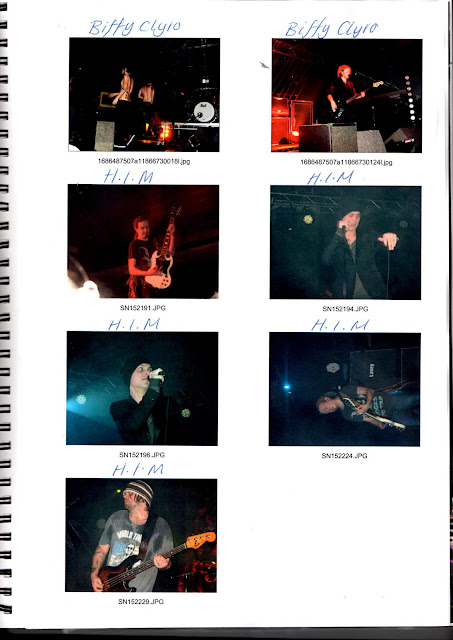In this project our aim was to research and plan, using a scrapbook and Blog, firstly the front page and contents page of a new College magazine and then secondly the front page, contents page and Double-page spread of a new music magazine, and then we had to create both using our own photographs and ideas.
To begin with I had to start by researching the different components that make a magazine, and by using this I created a Mock magazine, to show evidence that I know the elements well. I then started to research the college magazines in circulation in today’s market, such as ‘Ridgewater’; I did this by reading hard copies and then looking on the Internet for the front pages. I then went to take photographs for the college magazine using my friends and objects around the house. From that I then brainstormed my ideas in a Mind map of my ideas and from this I concluded what I was going to put into my college Magazine.
For my Music magazine, I had previously read music magazines of the genre I was basing my magazine on, so I picked my old copies of the magazines, such as Kerrang! And Rocksound and re-read the to see what the contents of the magazines are and to see the layout. As I continued to do this research and create the magazines I filled in my scrapbook with the research and work and my blog as well.
Although I was quick to create the magazines using the software, and print each stage off, I didn’t stick the hard copies of my work straight into my scrapbook furthermore I did not write about them straight away, therefore I was left lots of writing to do when I had completed the music magazine. But as I had finished my magazine quite quickly I was able to catch up with the writing to finish. However I may have finished my scrapbook on time, my Blog seemed to have suffered, I had forgotten that I had a blog to write as I am no used to writing one, therefore I was behind with my Blog, so I rushed to finish it on time.
If I had to do this project again I would have used my time better, by keeping my scrapbook and blog up to date with each stage of my magazine instead of rushing at the end.
I did not face many problems with my coursework, but the problems I did have were at first the blog confused me, but the more I went on it, the more I became confident with using this. Another problem I faced was with the software Quark Express, I had a crash course in the software at the beginning of the year, but I had forgotten how to use several parts, but to solve this problem I just asked my classmates and the tutor for help if I became stuck.
In the course of creating my foundation portfolio, I learnt new skills such as; I developed knowledge on how to use photo-editing software, to enhance my photographs and to make cool effects, I also learned how to use Quark Express to create a magazine. Furthermore I learned how to use an Apple Mac, which I have never used before; it has a different layout from P. C and so I was unsure where different software was and how to get things to print, but like the blog, the more I used the Mac the better I became at using the computer; but the moments I did become confused I asked my tutor for help.
I believe that blog has been set out in a way that is easy to read and has a simple layout to understand. I have provided evidence of my work on the blog in the form of pictures, to get some of the pictures I had to scan pages from my scrapbook but overall I think that is a decent blog. However I do have some criticisms of my blog the first being, that I left a large gap between posts because I forgot about my blog, also I don’t believe that I had enough posts for my work. And finally I would have like to have had more polls and people opinions on my blog so I have more of an idea on what the general public thought.
For my college I wrote an evaluation of it my scrapbook, but if I had more time I would have took different pictures to use on the front cover, maybe of a student outside, and not when its dark and in a house. Also I would have probably changed the colours used on the front cover, from pink and yellow, to different colours that are more male friendly, like red or green.
Overall I think that my music magazine is a great representation of my work over the past couple of months. With my first design of my music magazine cover I was unhappy with the layout, and design, so I decided to redo it until I happy with the results. The only thing I think I would change would be the Picture at the front, I think I needed a better quality of picture, the picture I have used looks a little blurred.
In my scrapbook I would have wished it to made a little neater, in the layout and perhaps in chronological order. I would have also liked to have more work put in to the book in terms of research and public opinion, such as surveys and questionnaires, but also I would have liked to have used a more varied use of different media, like videos.
Overall I am happy with my foundation portfolio and the work I produced within it..
















































